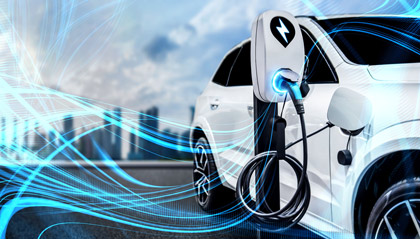Electric Vehicles (EVs) have emerged as a sustainable and innovative solution in the realm of transportation, transforming the way we perceive mobility. This article delves into the history, technology, and potential of EVs, offering a glimpse into their significant role in shaping a greener future.
The Dawn of Electric Mobility
The invention of the EV is a story of collective genius, tracing back to the 19th century. Pioneers like Ányos Jedlik, Robert Anderson, and Thomas Davenport laid the groundwork, experimenting with early electric motors and vehicles. The 1859 invention of rechargeable batteries by Gaston Planté and subsequent improvements by Camille Faure catapulted the practicality of EVs, culminating in Andreas Flocken’s 1888 Flocken Elektrowagen, often regarded as the first true electric car.
Understanding Electric Vehicles: Beyond the Basics
EVs, defined simply, are vehicles powered by electric motors, utilizing electricity stored in batteries. This shift from traditional gasoline engines to electric motors brings forth advantages like zero exhaust emissions, lower maintenance due to fewer moving parts, and cost-effectiveness. Modern EVs typically employ lithium-ion batteries, prized for their longevity and efficient energy retention, though safety concerns like thermal runaway persist. Charging these vehicles varies in cost and availability, with some public spaces offering free charging options.
The Landscape of Electric Vehicle Types
Electric vehicles are not monolithic; they come in different forms:
Battery Electric Vehicles (BEVs): Fully electric, like the Tesla Model X, BEVs rely solely on electricity stored in large batteries.
Plug-in Hybrid Electric Vehicles (PHEVs): Vehicles like the Mitsubishi Outlander PHEV combine an internal combustion engine (ICE) with a battery charged externally, enabling electric-only driving.
Hybrid Electric Vehicles (HEVs): Combining an ICE with an electric motor, HEVs, like the Toyota RAV4 Hybrid, use regenerative braking to recharge their batteries.
The Rise of Tesla: A Case Study in EV Popularity
The Tesla Model 3 exemplifies the widespread appeal of EVs. With its advanced self-driving capabilities, efficient electric powertrain, and competitive pricing, the Model 3 has become a global bestseller, leading the charge in EV market dominance. Its success, alongside other popular models like the Nissan Leaf and Tesla Model Y, highlights the growing consumer preference for electric over traditional fuel-powered vehicles.
The Historical Journey of Electric Vehicles
EVs have a storied past, beginning in the 1800s with foundational developments across Europe and the United States. By the 1900s, the market was divided among steam, gasoline, and electric cars, with each having its unique appeal. Despite early popularity, the advent of affordable gasoline vehicles, like Ford’s Model T, overshadowed EVs until the oil crises of the 1970s revived interest. The late 20th and early 21st centuries witnessed significant advancements, marked by the release of the Toyota Prius and the rise of Tesla Motors, propelling EVs into the mainstream.
Electric Vehicles: A Sustainable Revolution
EVs, primarily powered by rechargeable batteries, represent a significant shift towards eco-friendly transportation. Emitting zero emissions, they address key environmental concerns like climate change and air pollution. With diverse models catering to various needs, EVs offer a promising alternative to traditional vehicles, combining cost efficiency with environmental stewardship.
Milestones in Electric Vehicle Technology
Introduction of Electric Start (1912): The Cadillac Model 30, with its electric start system, marked a pivotal moment in automotive history.
Advanced Technologies: Modern EVs incorporate lithium-ion batteries, electric motors, inverters, and sophisticated features like regenerative braking and advanced driver assistance systems (ADAS).
Role of AI: AI is crucial in optimizing battery health, managing energy efficiency, and enhancing autonomous driving capabilities in EVs.
Motor Varieties: EVs use AC motors for their efficiency and ease of control, though DC motors are still used in some cases.
Navigating the Challenges of Electric Vehicles
Running Out of Battery: When an EV’s battery depletes, the vehicle will eventually stop, necessitating a tow to a charging station.
Battery Drain When Parked: EVs do experience minimal battery drain when parked, but this can be managed through various power-saving modes.
Range Reduction Over Time: Like all lithium-ion batteries, EV batteries gradually lose capacity, but advancements in technology are mitigating this effect.
The Road Ahead for Electric Vehicles
Electric vehicles represent a paradigm shift in transportation, offering a cleaner, more efficient alternative to traditional vehicles. As technology continues to advance and public charging infrastructure expands, EVs stand at the forefront of an automotive revolution, promising a sustainable future with ongoing innovation and policy support.
Source: https://newslinker.co/what-is-electric-vehicle-in-simple-words













